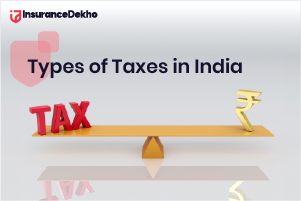Difference between NPS and PPF
Updated On Feb 23, 2023
Table of Contents
In today’s time, a financial emergency can knock on your door at any point and exhaust your savings. In order to be prepared against such uncertainties, there are a number of investment options available that make it easier for individuals to purchase a desired plan as per their budget and requirements. There are exclusive pension plans such as NPS and PPF which are meant to offer guaranteed returns after retirement. Moreover, both of these also act as tax-saving instruments. However, many times, individuals often get confused between NPS and PPF. So, let us understand all about how NPS and PPF are different from each other.
What is NPS?
National Pension Scheme or NPS is backed by the Government of India and is regulated by the Pension Fund Regulatory and Development Authority (PFRDA). This is a type of pension scheme that is voluntary and is one of the best ways to secure the future and enjoy the blissful phase of retirement. The funds invested in NPS are market-linked and offer higher returns as compared to many other pension schemes. There are two types of NPS accounts: Tier 1 Account and Tier 2 Account. While there are restrictions on withdrawals from Tier 1 Account, you can freely withdraw from Tier 2 Account.
What is PPF?
The Public Provident Fund or PPF was introduced in the year 1968 by the Ministry of Finance. This is also a voluntary tax saving scheme that is opted for by individuals to create a corpus for the future. Generally, the tenure for PPF is 15 years, however, this can be extended for further 5 years and so on.
Differences between NPS and PPF
Listed below are the differences between NPS and PPF:
|
Point of difference |
NPS |
PPF |
|
Safety |
As compared to PPF, NPS comparatively involve more risk and is regulated by market. |
PPF offers fixed returns that are set by the government and thus do not involve any risk factor |
|
Returns |
NPS depends on the performance of funds and |
PPF involves a fixed return rate |
|
Liquidity |
NPS matures after the age of 60 and this is extended after 70 years. You can do partial withdrawals after the 3rd year of opening the account. However, such withdrawals can only be done in certain instances such as wedding of children, higher education of dependants, treatment of diseases, and such instances. |
The tenure of the PPF account is 15 years and the withdrawals can be done after the end of the 6th year. |
|
Taxation |
Contributions made towards NPS are tax-free as specified under section 80C. However, please that such contributions cannot exceed 10%. |
PPF allows tax deductions of up to Rs. 1.5 lakhs. The interest earned out of PPF is also tax-free. |
|
Lock-in period |
NPS has a larger lock-in period and matures when the individual reached 60 years of age. This type of account can be opened only after 18 years of age. |
PPF accounts on the other hand can be opened for minor children as well. |
Which is better: NPS or PPF
After understanding the differences between NPS and PPF, it is also clear that both types of accounts have their own advantages and disadvantages. While PPF has lower risk involved, NPS on the other hand offers higher returns but is largely affected by market performance. So, it is totally up to you, whether you want to get higher returns or a plan that has lesser risk involved. Otherwise, both NPS and PPF are good investment choices.
Take Away
So, apply for any of these investment plans, and get assured returns in the years to come. Just analyse your requirements and accordingly invest in the desired plan.
Also Read:




























